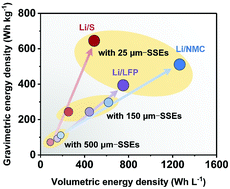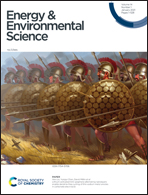Reducing the thickness of solid-state electrolyte membranes for high-energy lithium batteries
Abstract
Rechargeable batteries with lithium metal anodes exhibit higher energy densities than conventional lithium-ion batteries. Solid-state electrolytes (SSEs) provide the opportunity to unlock the full potential of lithium metal anodes and fundamentally eliminate safety concerns caused by flammable liquid electrolytes. Up to now, most studies on SSEs have been focused on enhancing the ionic conductivity and improving the interfacial stability. However, the electrolyte thickness, which has received less attention, also plays an important role in determining the energy density and electrochemical performance of all-solid-state lithium batteries (ASSLBs). Recognizing this, our review evaluates SSE studies beyond traditional factors and focuses on a thickness perspective. We systematically analyze the influence of the electrolyte thickness on the energy densities of ASSLB pouch cells, and highlight the strategies that dramatically reduce the thickness of SSE membranes without sacrificing their mechanical properties. Then, we discuss recent advances and challenges of ASSLBs based on high-voltage and high-capacity cathodes, as well as novel configurations such as bipolar and flexible ASSLBs. Finally, we provide perspectives and suggestions towards high energy-density ASSLBs for future commercialization.

- This article is part of the themed collection: Energy and Environmental Science Recent Review Articles


 Please wait while we load your content...
Please wait while we load your content...